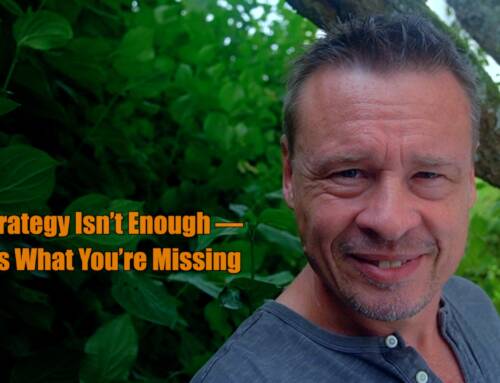Modern communications has incredible tools!―Why is it that development cooperation doesn’t make better use of its opportunities? What can you do about it?
Communications in development is plagued by a terrible lack of effectiveness. Especially in agriculture and rural development so much more could be achieved if only the tools and strategies would be used properly.
Communications could contribute proactively and substantially to project advancement but mostly it lingers on as public relations―relaying project data that are of no particular use to a wider audience, or helping out conference organizers with venue beautification by loosening up the event agenda with an aesthetically valuable video!
A predilection for useless PR?
Here are some observations and possible reasons:
- The first challenge I find to be structural and it relates to the usual institutional setup in development cooperation. I believe that project managers tend to make decisions on communications activities though they have no more than intuitive knowledge on strategic communications.
- I observe a general lack of independent communications advice to project managers. Advisers are either working within the organization―usually in corporate communications departments with no connection to the project―or as an employee of a communications firm which is already hired to implement certain services. That obviously limits their ‘willingness’ to propose certain action to their clients, especially if it would result in less billable hours for them.
- There is a common procedural flaw in the initial conceptualization of development communications activities. That is that project managers, or even proposal writers, often decide on the tools to be used before clear communications objectives are decided upon. Often there’s also no professional strategic communications advice sought, which clearly impacts the effectiveness of the activities directly. Indirect impact can also result in demoting communications advisers to an extended workbench who simply implement what is cooked up already and often doesn’t make much sense in their eyes.
Let’s have a closer look at the arguments―which are based on my observations and not on scientific evidence, I admit.
Common Pitfalls in Development Communications
Change the institutional process
In the development cooperation context, many organizations are essentially governed by a project setup that doesn’t leave much space for communications professionals to play a decisive role.
Portfolio leads within donor agencies and project managers on the side of the implementing agencies often don’t have an inclination towards communications, having been hired for their technical background relating to the subject matter of the portfolio. This has the undesirable effect that the officially promulgated wish of donors for communications to enhance transparency is actually reduced to antiquated one-way PR, simple branding activity such as sticking logos all over and posting project results online without refining them for the interests of target groups.
The typical interpretation that positive showcasing of their involvement was donors’ sole intention and therefore the reason behind the current practice, however, is overly simplistic and also ignores the fact that implementing agencies play a part in the game as well.
Communications must add value towards achieving project goals
Decision-makers on the donor side surely know how critically instrumental communications is for achieving many development initiatives’ goals. Behaviour change is only one, though very important example. What is missing is that this knowledge is anchored in decision-making processes in a way that the purpose of communications budget lines cannot easily be reinterpreted and that funds that were meant for targeted communications work are easily diverted off for relatively useless PR and beautification.
Concrete action is needed here, including a change in the overall project setup, starting at the conceptualization and proposal writing points where the use of comms funds should be fixed in writing, all the way to hiring communications staff who actually have a background in communications and not only in journalism or development cooperation!
One word on why there is so little change. On the side of the implementing agencies there is another factor that contributes negatively to the situation: For many projects, it comes in handy to easily succumb to donors’ alleged, overpowering wish for positive PR. It secures future funding for the implementing agencies, which is obviously paramount. Unfortunately though, this cycle doesn’t generate a lot of spinoff for the beneficiaries.
My recommendation is that donors seriously consider stipulating for communications funds to be allocated towards gainful types of communication. Straight-forward! Clearly, the creation of project logos and the installation of yet another website with project photos without assessing whether this has much chance of adding any value cannot be considered gainful.
Seek advice from a comms pro who is not involved
Investing in communications is comparable to private finance investment―not only because of the wish for positive returns. It’s also similar in terms of the difficult question on whose advice to trust.
Once your house bank has your investment portfolio, you should be suspicious of what they tell you is good for you, because it might rather good for them actually. Therefore you should definitely consider seeking advice by a financial advisor who you pay by the hour. The same is true for the communications agency that is on your retainer. You stand a good chance that they’ll not tell you that a particular tool has only a remote chance of impact once means a lot of billable hours for them!
In both cases, the chosen service provider typically comes with great credentials, has been used many times before, never tried to oversell, shows reliable finance administration procedures and produces ‘good looking’ output. These are the usual categories for selecting an agent or agency. Though it remains unclear why they are viewed as sufficient indicators for choice in the first place.
Then there is still the question of professional impact assessment of the work being undertaken. On the side of implementing agencies, getting support on this from an in-house communications unit is usually not possible. Where these units exist, they mostly focus on corporate communications (i.e. PR) and are not available for project staff seeking profound comms advice. So what happens? Not only collecting but also analyzing the comms stats is left to the provider of the service. I always wonder how anyone can actually not see a massive conflict of interest here. No doubt, results will be favorable. And that is an absolute killer here. Naturally, this serves all those involved in the process. Exactly what’s needed for everyone’s accountability, log-frames and internal advocacy. Even virtual impact can be generated in this setup!
To be clear, there is no perfect solution to all this but getting independent advice would certainly be an important first step. Get an independent communications advisor for a couple of days who looks at your communications ideas, the ToR for the website company and the comms part in the log-frame. Donors would have to be prepared to pay for it though! Unfortunately, donors seem to be of the opinion that these are unbearable extra expenses for development work, though it would be a critical advancement in terms of cranking up the level of impact communications can help to facilitate in development cooperation work!!
Don’t decide on the tools before speaking to the experts
Compounded with the above is another factor that leads to a lack of effectiveness in development communications: Tools are chosen before the communications objectives are clearly carved out!
A typical scenario is that the project log-frame and ToR for a communications agency are written by someone with no particular experience in communication. Some implementing agencies even use special proposal writers, so it is not a far-fetched idea that their second specialization is probably not communication.
This constellation is extremely critical as typically the log-frame nails down which tools will have to be used later on. The staffer who is charged with writing the log-frame needs to fill in the communications part. So the staffer is someone with a background in agriculture for example and therefore s/he writes in the communications boxes: website and newsletter, because that is what s/he knows of communications and beyond that s/he might be under the impression that the communications agency, which will later be hired, will make sure that everything is taken care of professionally.
But that is usually not case at all! If tools are pre-set the hired service provider will have to do a classic retrofitting―a tedious process of modifying your preconceived setup after it has been ‘manufactured’. The log-frame reads ‘website’, so the service provider will have to find a way to set up a website even though the target group is not really using the internet. The bureaucracy will not allow them to argue that a company page on LinkedIn and strong Twitter profile would be better action. ‘Website’ is set by the donor!
It is a procedural problem in the conceptual phase. Donors should start finding a way to fix this. Communications components of projects should be conceptualised and cross-checked by communications professionals, ideally independent ones!
To sum it up
It all starts with the insight that communications might be a core function of a project that can substantially contribute to its success, and not only a PR add-on to what project managers consider the technical core of a project. Once this insight has trickled down, there is a better chance for communications to become really strategic, gainful and which stands a chance to reach considerable impact!






Leave A Comment